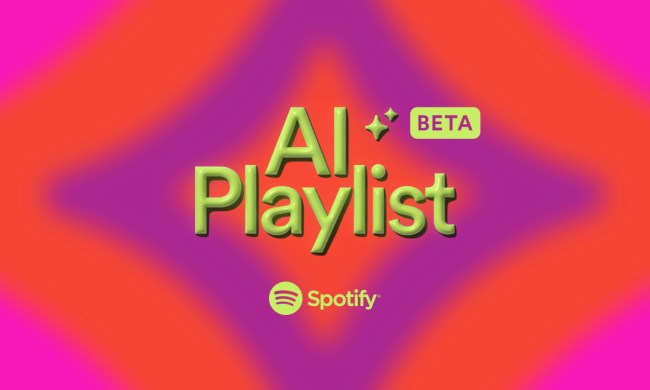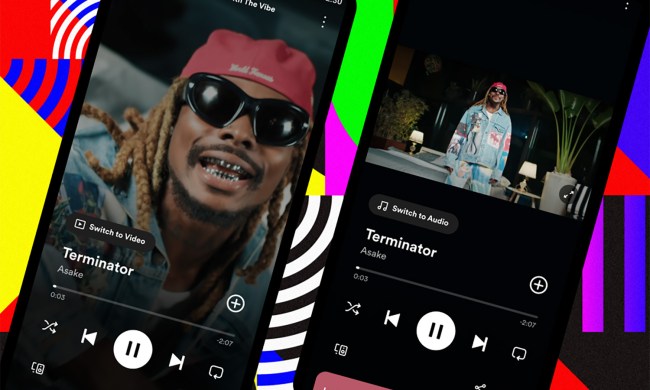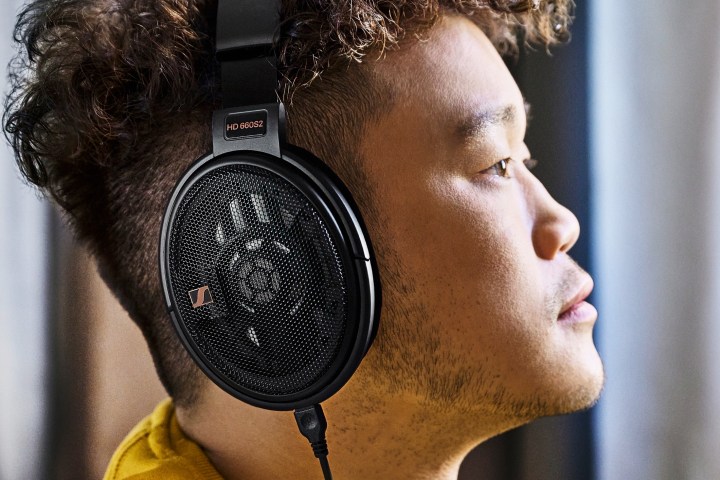
Spotify is the world’s leading music streaming service, with over 236 million active paid subscribers and a vast library of artists, albums, podcasts, and audiobooks. It is available on almost every desktop and mobile device. However, if you are a fan of hi-res audio, Tidal may be a better option as it emphasizes hi-res content and offers a vast collection of music and video content.
To determine which platform is better, we compared Spotify and Tidal based on price, sound quality, and supported devices.
Price
Spotify has two tiers of service for individual users. The free, ad-supported tier gives access to the entire library of Spotify content, but has restrictions on how you can interact with it and also has ads. The full-featured Premium plan costs $11 per month, which is standard for the industry now. Spotify also offers plans for two individuals for $15 per month, called Spotify Premium Duo, and a six-person family plan (with parental controls) for $17 per month. There’s also a student plan at just $6 per month.
Students can get an outstanding deal; a student Spotify premium plan entitles them to a free, ad-supported Hulu account. If you’ve never signed up for Spotify before, you can try Spotify Premium free for 30 days. Its paid plans let you download up to 10,000 songs for offline listening on up to five different devices.
According to Bloomberg, Spotify plans to introduce new subscription options and raise prices in 2024 in the U.S. and elsewhere. Premium users are expected to pay an extra $1 per month, while the Duo and Family tiers may increase by $2 per month. A less expensive option, priced at $11, will include music and podcasts, but not audiobooks. We’re also still waiting for Spotify to reveal its plans for its hi-res audio offering (more on this below), which most of its competitors now offer.
In April 2024, Tidal updated its subscription pricing to simplify its offerings and better compete with its rivals. The company discontinued its long-running HiFi and HiFi Plus plans and replaced them with new plans that provide lossless audio, hi-res FLAC, and Dolby Atmos Music. There’s also no longer a free plan available. The new plans now include an Individual plan for $11 per month, a Family plan for $17 per month (which covers up to six family members), and a Student plan for $5 per month. Tidal for DJs is also available as a $9 per month add-onto the Individual plan.
With any of the subscriptions mentioned above, you’ll have access to more than 110 million tracks in lossless, hi-res FLAC, and Dolby Atmos. The ad-free service provides offline listening, personalized mixes, editorial playlists, and live sessions.
You can enjoy a 30-day free trial if you’re new to Tidal. During the trial period, you’ll have access to Tidal’s entire ad-free, lossless catalog and streaming features at no cost.
Tidal’s new prices put it more in line with Spotify. However, because it no longer offers any sort of free plan, Spotify remains the winner on price.
Winner: Spotify
Supported devices
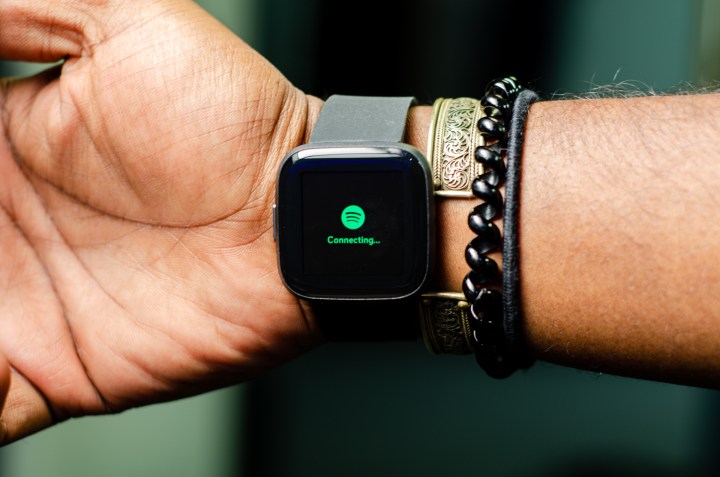
Tidal has apps for all the big platforms, including Windows, MacOS, iOS, tvOS, Android, and Android TV. With an emphasis on the audiophile crowd, it also supports some very high-end streaming components from brands like Astell & Kern, Devialet, Denon, Harman Kardon, KEF, Martin Logan, and Meridian, to name a few.
Its support for more common devices like game consoles or the Roku platform is more anemic. Users who want Tidal streaming on these devices may need to sign up for a Plex account. You can add your Tidal account to Plex, and from there, you can use the Plex client on a wide variety of media streamers and game consoles.
Spotify not only has the major platforms covered, but there are also very few connected audio devices the service doesn’t support. From smart speakers to smartwatches and even some of the audiophile brands that Tidal covers, Spotify’s device support is arguably the best among all music streaming services.
Winner: Spotify
Music variety and catalog size
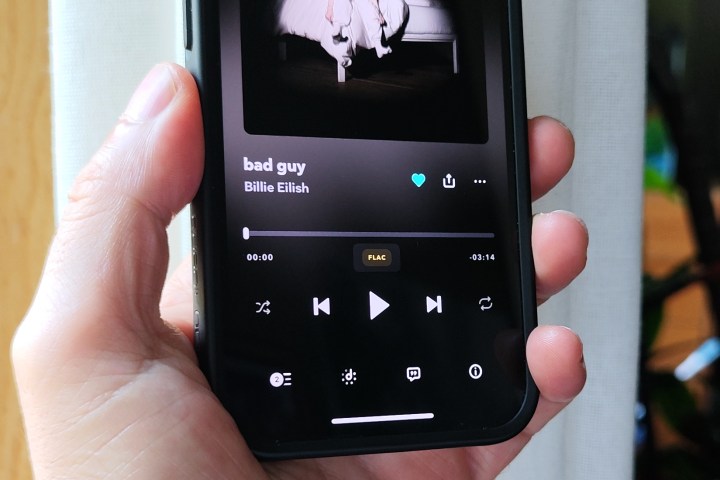
This might be the toughest category to judge. As of April 2024, Tidal claims a 110-million track library and 650,000 videos. Spotify claims it has over 100 million tracks, 5 million podcasts and 350,000 audiobooks. We have yet to find an independent source to verify these claims, so we’ll take them at their word for now.
Music variety can also be tricky to determine. The general sense is that Tidal’s catalog skews toward rap and hip-hop artists, especially young and relatively unknown ones. This is in keeping with Tidal’s original ownership structure, which largely consisted of successful musicians such as Jay-Z, who were interested in promoting other talents. However, this perception could be changing now that Block, formerly Square, owns Tidal.
For its part, Spotify’s catalog appears to be more balanced, though this might reflect how the service automatically starts to tune itself to listeners’ demonstrated musical interests. We do know that some artists have actively refused to let Spotify carry their music over concerns about inadequate royalty payments (most of which stem from its free, ad-supported tier). Taylor Swift famously boycotted the company in 2014, though she has since added some of her albums back.
With claimed catalog sizes that are among the biggest in the industry and no objective way to evaluate any of this, we’re calling this one a tie.
Winner: Draw
Sound quality

Spotify offers compressed 320kbps streaming quality, while Tidal offers lossless, CD-quality streams.
But things might change if Spotify ever catches up with its long-awaited hi-res audio option. Over the last few years, it’s had a few names, including Hi-Fi and Superpremium. The most recent tidbit of hope comes from some code sleuthing by Reddit user Hypixely, as reported by The Verge, which says that Spotify’s lossless might instead be an add-on called “Music Pro” and may support up to 24-bit/44.1kHz FLAC files. The new offering would finally see Spotify catching up to other services like Apple Music, Tidal, Qobuz, and Amazon Music in offering higher-quality tracks.
So, at least for now,Tidal wins when it comes to sound quality. There is a small caveat here: To get the most out of Tidal’s higherbandwidth streams, you’ll need a compatible device and, in some cases, a digital-to-analog converter (DAC). Virtually all of Tidal’s supported devices can handle its lossless CD-quality streams. But mobile users should take note: these streams will eat up your allotment of data at a much faster rate than non-hi-res tracks, so be sure to check your settings and choose the lower-quality mobile option if data consumption is a concern.
Speaking of hi-res, Tidal supports a variety of formats like Dolby Atmos Music, Sony 360 Reality Audio, FLAC and MQA. Some of these (like FLAC and MQA) may need additional external devices like DACs in order to hear them at their maximum level of quality. Here’s a handy list of devices that work with MQA.
Winner: Tidal
Videos, podcasts, and more
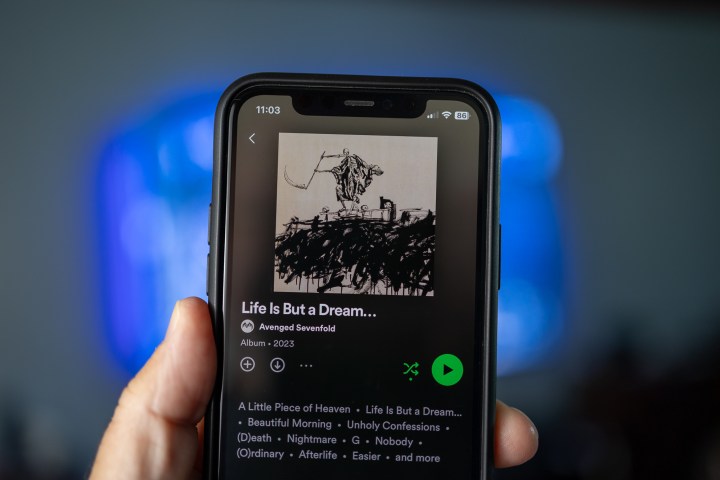
These days, music streaming services are about more than just music. Videos, podcasts, interviews, and live concerts are all becoming important parts of the mix. Tidal has chosen to focus on videos and live concert recordings, some of which are exclusive to the service. It has a catalog of over 650,000 videos, some of which are portions of live concerts, live concerts in their entirety, or exclusive shows. For mobile users, the ability to download any of these videos for offline viewing is a big help in avoiding data charges.
Spotify has videos, too, but the company appears to be coy when promoting them. You won’t find a video category when you browse, and even the search filtering options, such as “see all artists,” lack a “see all videos” item. You have to search for a specific song or podcast, then check to see if there’s a video attached to the stream. If there is, you can press play and start watching it.
Some folks have also had issues accessing video content, even when it is available. If you’re trying to watch with the Spotify mobile app, you may have to go into the app settings and toggle off Audio Quality. For whatever reason, this seems to act as a remedy for missing videos.
As far as Spotify’s podcast content goes, the company boasts a catalog of over 5 million podcasts. Tidal had very few podcasts at the time this article was published.
As impressed as we are by Tidal’s video catalog, you subscribe to a music streaming service primarily because of audio. With the huge increase in the popularity of podcast listening, we’re giving this one to Spotify.
Winner: Spotify
Conclusion
For most folks, Spotify’s extensive music catalog, its enormous device support, and its variety of both paid and free plans make it the obvious choice. It’s no accident it’s the world’s most popular streaming music service. For these reasons, we’re declaring it as the overall winner.
However, in a universe of compressed digital files, Tidal’s packages allow you to enjoy true high-fidelity music from an easy-to-access subscription service. And while newer platforms like Qobuz have arrived to challenge Tidal’s reign over HiFi listening, ultra-premium audio is still what the platform does best, and Tidal seems to show no signs of stopping anytime soon.

